http://lowchurchmanguide.tumblr.com/
28th Jul 2013
Rood Screens
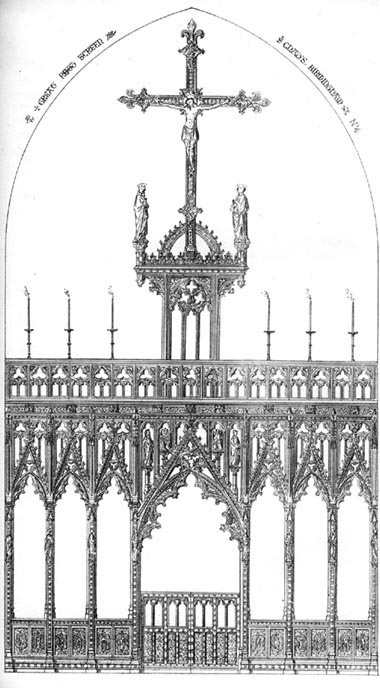
When a group of Ritualists arrive in a parish church, they will usually begin by making relatively minor, cosmetic alterations to the chancel and changes to the order of service. At some point, however, a point will arrive when no more Romish accessories can be added to the church; the chancel has been completely filled with statues of saints and gold-plated bric-a-brac, and the air is thick with the sickening odour of sherry and stale incense. At this point the Ritualists will begin to attack the fabric of the church building itself, like termites.
The first order of business in renovating a church building along ritualist lines is the installation of a rood screen. One of the most degenerate relics of the Dark Ages, the rood screen is an ornamental frame mounted between the nave and chancel, for no other purpose than to block the parishioners’ view of the altar area. The ritualist’s ideal is a rood-screen made entirely of marble, surmounted by an enormous crucifix and completely covered by images of the virgin Mary.
Once Ritualists are able to install a rood screen, it is very difficult to extricate them from the parish, since the cover provided by the screen allows even a small group of priests to defend the chancel against an infantry attack from the nave.
Candles
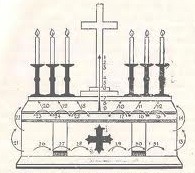
Candles provided a source of artificial illumination before the invention of the electric light bulb. Since modern churches are equipped with electric lights, and since their services take place during daylight hours, there is no reason to produce light by burning cylindrical pieces of wax. The presence of candles is thus an early warning sign that ritualists may be present. If you find yourself in a church that contains lit candles, however properly appointed it may otherwise seem, you should consider yourself to be in grave personal danger: at any moment a ritualist priest may descend upon you, surrounded by incense and clutching a handful of rosaries. Do not attempt to extinguish the candle yourself: call the fire department.
While even one candle is cause for concern, the presence of six candles on the church’s altar is associated with the most extreme branches of ritualism. Mounted on tall candlesticks, these candles frame the priest’s head as he mutters Latin phrases, surrounding his form with an unholy orange glow. Despite the bright gleam produced by the candles at first, their eventual fate symbolizes the ultimate destruction of all ritualists: they flicker and gutter, spattering wax in all direction, before finally melting into a puddle of putrid ooze.
"Solemn" Things
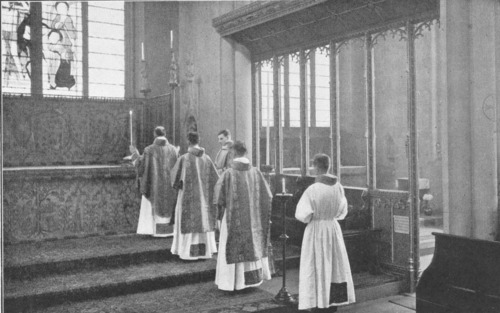
A sure sign that a parish has fallen into the clutches of Ritualists is the presence of services labelled as “solemn." A properly-equipped Ritualist church will mark each Sunday with a Solemn High Mass, a Solemn Evensong (with or without Solemn Benediction), a Solemn Te Deum, the Seven Solemn Anthems of Our Lady of Lichen, a Solemn Litany in Procession, one or more Solemn Rosaries, the Solemn Angelus, the Solemn Baptism of Such as are of Riper Years, and anticipated Solemn Sext of St Enodoc (transferred). This level of solemnity is felt by Ritualists to constitute a bare minimum, to which other services may be added.
Future reports will describe the structure and ceremonial action of all these services in greater detail, so that loyal churchmen will be in a position to flee at the first sign that one of these services is about to take place. A good rule of thumb, however, is to avoid entering any church at which “solemn" services are advertised. Unless you have the proper training, it is not advisable to enter a church where a “solemn" service is in progress, even if you only intend to document its ritualist practices for informational purposes; the time you spend at such a service would be better spent in writing a letter of complaint to your bishop.
Maniples
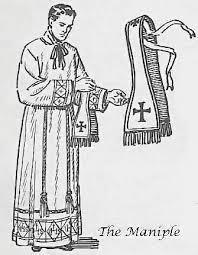
Ritualists may be evil, but they are cunning. While some pieces of ritualist paraphernalia have an obvious function, others have no clear use or purpose, so that the loyal churchman must resort to guesswork to determine their part in the ritualist masterplan. Such items include the “maniple," illustrated above. Barely visible underneath the priest’s other vestments, this decorated band of cloth is held in high esteem by the ritualists, who believe its presence to be crucial in the performance of their mystical incantations.
The maniple’s name derives from the Latin word mane, meaning “early in the morning." The ritualists claim that it is a stylized handkerchief, derived from the cloths that the priests of the early church would use to wipe their faces. This is clearly a lie, since ritualists in fact never use their maniples for this purpose. Various explanations have been ventured as to the true purpose of the maniple: does its elaborate embroidery contain coded messages from the ritualist’s true masters at the Vatican, or does it conceal a loop of piano wire that the priest can use to garrotte an adversary?
Processions
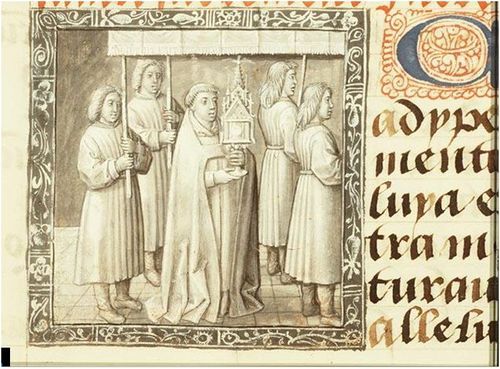
As a parish succumbs to the full horror of ritualism, its liturgical practices may come to include Processions. A brief Procession may take place at the opening of a Sunday service, while a more extended procession might take place on a day of special note. For a convinced Ritualist, of course, a “day of special note" does not refer to the accepted Christian holidays set forth by the duly elected civil authority, but includes such dubious celebrations as “Our Lady of the Snows" and “St Philibert of Jumieges."
Consider the mindset of the Ritualist priest as he lurks in the sacristy of his church, his villainous features half-hidden by clouds of incense. If you or I were to enter our place of work, we would proceed quickly and efficiently to our position and embark upon our assigned tasks with due diligence. Nothing could be farther from the mind of the Ritualist than “diligence" or “efficiency," as he begins the service by perambulating aimlessly through the aisles of the church. This exercise serves to confirm the priest in his vanity, as he parades in colourful vestments before his mortified congregation. But the procession also serves a more subtle purpose, since the distraction it provides allows the priest and his accomplices to steal money and other valuables from the assembled parishioners.
Organ Shoes

The presence of “organ shoes" such as these is one of the first warning signs of ritualist musical practices. A loyal Anglican always wears ordinary shoes, such as may be purchased for reasonable prices at your local shoe store; he reverts to specialized foot coverings, known as “boots," only in cases of inclement weather. For the ritualist, however, ordinary footwear is not enough: the organ shoes he craves cannot be purchased at normal shoe stores, and must be ordered by mail order from specialized companies of dubious reputation. This signifies the ritualist’s elitism, and his unpatriotic preference for garments of foreign origin.
The ritualist church musician will venture various excuses for his adoption of elitist foreign footwear. He will first claim that organ shoes are necessary to facilitate proper performance of organ music, to which the flat rubber soles of modern shoes are ill suited. If pressed, he may protest that he is not attempting to make any theological statement by wearing organ shoes, and that similar shoes are worn by organists in all denominations. The loyal churchman will know to treat all such excuses as the purest sophistry, and will indignantly reject the unnatural idea of playing a musical instrument with the feet. True Anglicans know that the feet have one purpose, and one purpose only: to stand firm against the onslaughts of ritualism. The ritualist church musician’s feet are never still: they slither unnaturally across the length and breadth of a grotesque pedal keyboard, as a symbolic rejection of the English virtues of honesty and uprightness. Any attempt by your organist to introduce such shoes in your parish must be met with implacable opposition, for behind the seemingly innocent face of a young church musician is the grim visage of the Bishop of Rome.
Canterbury cap

Among the many ritualist appurtenances modelled in the above photograph is the so-called Canterbury cap. Despite its misleading name, it ought to be obvious that no true Anglican would ever wear such a garment. It may initially seem innocuous for a clergyman to wear special headgear in church - particularly when the hat is of relatively sober design, lacking the ostentatious flamboyance of the episcopal mitre or the biretta. Yet if the symbolism of the cap is understood properly, its use is an affront to the very foundations of the Anglican way. Whereas the properly-dressed gentleman doffs his hat to show respect to a lady, the Ritualist clergyman dons a cap to show his disregard for Reformation ideals, Anglican order, and English values. Many a High Church clergyman has donned the Canterbury cap in youth, bewitched by its attractive appearance; the older Ritualist, hardened by a life of treachery and deceit, knows that wearing the cap is the only way to hide the demonic horns on his head from the congregation in his charge.
Chasuble
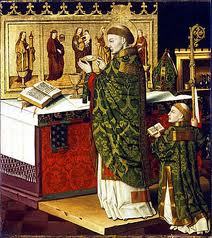
The chasuble is an outer garment worn by ritualist priests in their superstitious ceremonies. Its voluminous folds hide the priest’s hands from view, so that the congregation cannot see what mystical incantations he performs at the altar. Underneath the chasuble are worn various other garments, such as the so-called “alb," “cassock," and “amice;" these multiple layers of clothing symbolize the deceitfulness of the ritualist priest, who also attempts to confuse his deluded followers by wearing garments of different colours throughout the year. Underneath the chasuble the priest can store other items used in the liturgy, such as rosaries, alleged relics of saints, ‘holy’ water, vials of poison, grains of incense, and instruments of torture. Those who would wear such garments are condemned in Psalm 109: “My accusers will be clothed with disgrace and wrapped in shame as in a cloak."
Gregorian Chant
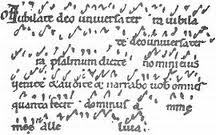
Gregorian chant, also known as ‘plainchant’ or ‘plainsong,’ is a form of so-called ‘music’ developed in order to stifle true congregational participation. In contrast to the apostolic simplicity of modern church music, Gregorian chant contains long and complex musical phrases, often containing dozens of notes on a single word (its practitioners call this ‘melismatic style’). These long melodic lines symbolize the chains of High Church doctrine, by which innocent Christians are ensnared by the bishop of Rome. It is typically performed in a style known as “a cappella," indicating that neither guitars nor drums are used.
Incense
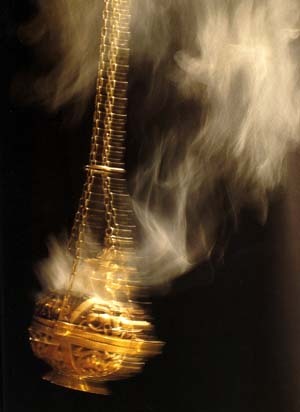
The use of incense is a Romish superstition, totally inappropriate for any Anglican church service. The spreading smoke represents the malignant influence of the Bishop of Rome, billowing forth from the Vatican to contaminate everything it touches. Exposure to incense is a known cause of cancer.
No comments:
Post a Comment